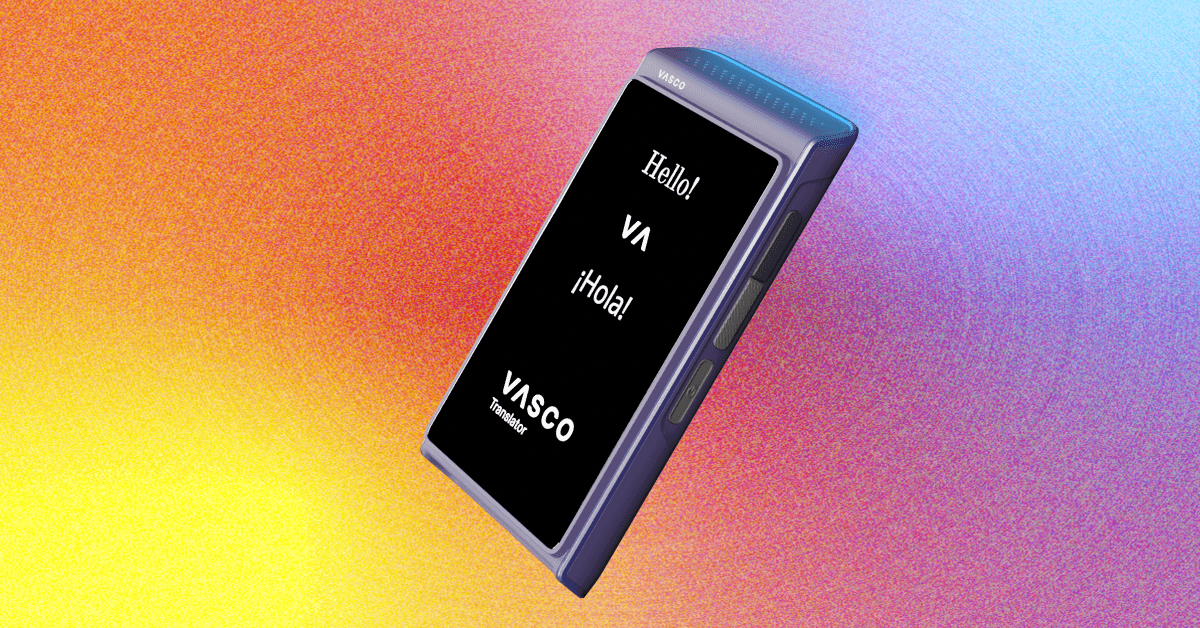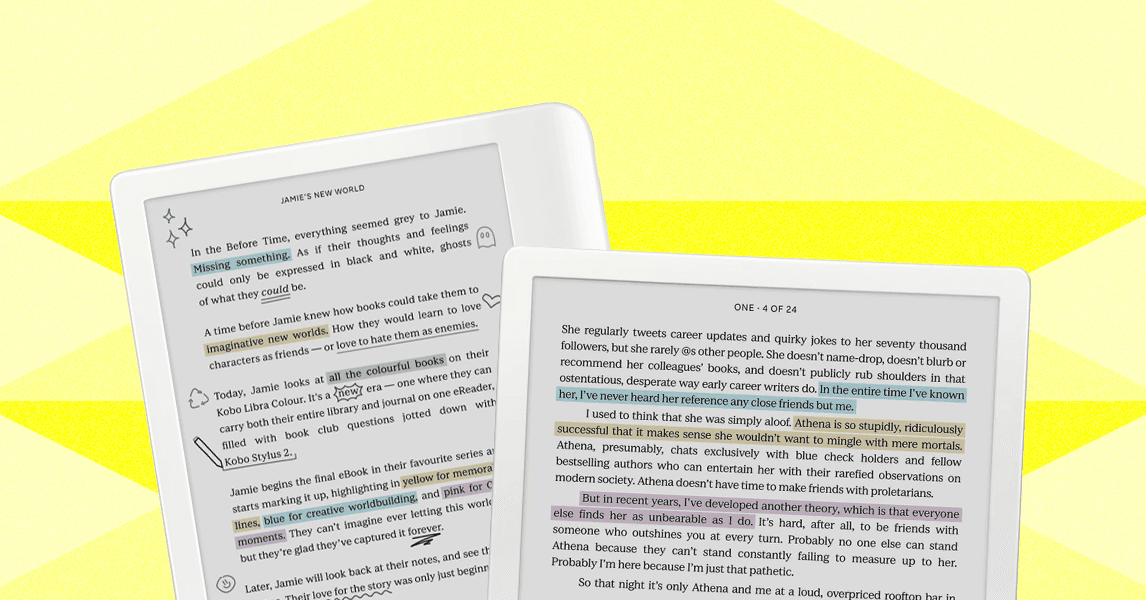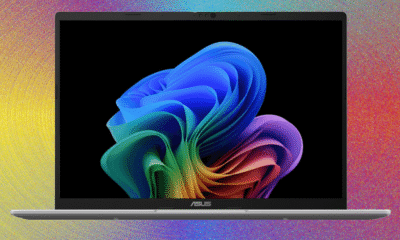Tech
Missing Launchpad in MacOS 26? Here’s How to Bring It Back

As I said, it’s not a perfect replacement, but take some time setting up folders and tweaking the settings and I think you’ll find it works well. And you can’t complain about the price.
A Few Other Alternatives
Now, there are a few other alternatives to keep in mind. Apple added a new “Applications” button to the dock, which opens Spotlight to the “Applications” section. This is an alphabetical list of your applications, both from your Mac and your iPhone, which you can scroll or search to browse. You can hide the iPhone apps if you want; just click the three dots in the top right corner and you’ll see that option. This works well enough, though the lack of folders, and the missing full screen option, are the main reasons you might not want this.
Another option is to drag the “Applications” folder from your Finder to the bottom section of your dock. Click this folder and you can scroll through all of your applications. You can also organize applications in actual folders using the Finder if you want to organize them. It’s a bit of a workaround, but it’s worth trying if you’d rather not install any third party software.
Speaking of third party software: LaunchNext is another popular Launchpad alternative, which notably can import your folders and settings from Launchpad. The problem is you can’t use it without working around the macOS security settings, something I generally don’t recommend doing. I also found LaunchNext a touch on the slow side. Still, it’s worth looking into if you’re a power user, as it’s a great deal more customizable than Launchie.
There are also a few alternatives that bring back the actual Launchpad application from older versions of macOS, but they require a lot of hacking and have a tendency to break with macOS updates—I couldn’t find one alternative that was working at the time I was writing this. Even if that changes, you’re probably better off using one of the above approaches—it’s just going to be more consistent.
It’s understandable if you’re not happy Apple removed a feature you like, but at least there are alternatives out there. Try a few out. One of them is bound to work for you.
Tech
Vasco’s Latest Pocket Translator Can Mimic Your Voice

The device has no moving parts, with just a 3.5-inch touchscreen that covers its face and a few buttons on each side. These include power and volume buttons, and the now standard pair of “talk” buttons—one to recognize your partner’s voice and one for your own. In many modes, you won’t need to use these, however. Like most handheld translators, the unit includes a preloaded SIM 4G card that gives it near-global usability. (Vasco says it works “in nearly 200 countries,” which is a lot, since there are only 195 widely recognized nations today.) 2.4-GHz and 5-GHz Wi-Fi are also available when you’re in range of a hot spot or at a hotel.
The 2,500-mAh battery charges via USB-C. Vasco claims that the Q1 offers “many hours of intensive use” and up to 160 hours on standby—though note the battery will drain faster than you might expect even when it’s idling. “Many hours” in my testing was less than eight, but the 160-hour standby metric was roughly accurate.
Language support is robust, but details vary based on how you use the device. For voice-to-voice translation, it supports 86 languages. For text-based translation, that goes up to 108. Oddly, photo-based translations work with 113 languages. Lastly, real-time call translation has support for just 53 languages. I’ll get to each of these in a bit.
After a quick setup, the Q1 drops you into a straightforward interface that lines up its six functions, one over the other. In addition to the four modes mentioned above, the system offers a group chat feature that can support up to 100 participants in their own languages, and a basic learning mode that simply quizzes you on vocabulary, Duolingo style.
Chatty Cathy
Photograph: Chris Null
Most users will likely spend the bulk of their time in conversation mode, which lets you carry on a one-on-one voice discussion with a real-life partner, each in the language of your choice. As is common for handheld translators, holding down one of two buttons—either the pair on the side mentioned earlier or another pair that appears on the touchscreen—lets you tell the Q1 who is talking.
Tech
The Best E-Readers, Chosen by WIRED’s Resident Book Lovers

Comparing Our Favorite E-Readers
Honorable Mentions
Below, you’ll find a few more e-readers we like but don’t necessarily love as much as our top picks.
Photograph: Nena Farrell
Kindle Scribe 2024 for $400: The second-generation Kindle Scribe is a great option if you want an e-reader that doubles as a digital notebook, but also want to remain within the Kindle ecosystem. It has a 10.2-inch (300 ppi) paperlike display with features like adjustable warm light and an auto-adjusting front light. The included Premium Pen also has a soft-tipped eraser (mimicking that of a No.2 pencil). With Active Canvas and expandable margins, you can also mark up ebooks and write notes in the side panel. Amazon has announced three more Kindle Scribes are coming out this winter, including color options, so we’ll be testing those once they’re available.
Nook GlowLight 4 Plus for $200: The 4 Plus is the only waterproof Nook in the lineup, and it has the biggest screen at 7.8 inches, along with 32 GB of storage. It also has physical page-turn buttons and a headphone jack for listening to audiobooks (but you can also connect wireless earbuds via Bluetooth). But it was often slower than my Kindle and tended to freeze. While the large library has cheap and even free ebooks, it’s not as good a selection as Kindle Unlimited. The process of getting a book from the library on a Nook is also beyond frustrating. You’ll need to download either Adobe Digital Editions or Android File Transfer before connecting the device to your computer physically and then transferring the files.
Kindle Colorsoft Signature for $280: The Kindle Colorsoft Signature is Amazon’s first Kindle with a color screen. It has a screen with an oxide backplane, which Amazon says delivers better contrast and image quality along with custom-formulated coatings and nitride LEDs for brightness and color accuracy. But the screen is capped at 150 ppi for color images, versus 300 ppi for black and white, and the experience of reading is still a little fuzzier when compared to the latest Paperwhite. It takes noticeably longer to process color images, too. It’s missing features that are by now standard on other color e-readers, like page turn buttons and stylus support. It’s not a bad Kindle, and color does enrich the whole e-reading experience, but we suggest waiting for a discount during an Amazon sale event. Kindle has since launched a cheaper option, the Kindle Colorsoft ($250) that has less storage (only 16 GB, verus 32 GB) and no auto-adjusting light or wireless charging.
Nook 9-inch Lenovo Tablet for $150: If you mainly read cookbooks or other color-intensive materials, and you want a dedicated reader, you might want to consider this affordable tablet from Nook and Lenovo, which has the Nook app built in. As with the tablets mentioned above, you lose the E Ink screen and the distraction-free nature of an e-reader. You can at least turn off notifications while in certain apps, which I recommend doing for the Nook app. It ships with an old version of Android, and it’s not built for heavy work like video or photo editing.
FAQs
Ebooks can be cheap, but as with regular books, the cost can add up if you’re a big reader. You should take advantage of your library card and check out ebooks instantly from the comfort of your home. We have a detailed guide that explains how to get free library books, but the short version is that most libraries distribute books via OverDrive. You can access these books a few ways, through Kindle or directly from OverDrive with a Kobo, or you can download the Libby app. These ebooks are automatically removed from your device and returned to the library when they’re due.
Each e-reader’s own book service varies in quality. Our favorite is Kindle Unlimited for $12 a month, which includes millions of titles, including audiobooks and magazines. Amazon’s Prime Reading also offers a handful of free books every month, which is good to know if you already have a Prime account. You can even lend books to friends and family for a short while (or have them share a book with you). We have a roundup of the Best Ebook Subscription Services here.
What File Formats Do E-Readers Support?
The most widely used format is ePub, which works natively with all the e-readers in this guide except for Kindle—technically. You can still upload ePub files to your Kindle, but you’ll have use the “Send to Kindle” feature (through Amazon, your email, or the Kindle app) to convert it to Amazon’s proprietary format called AZW. (Newer Kindles support AZW3 and KFX, specifically). Other formats that will work with these e-readers include PDF, TXT, HTML, DOC, and DOCX.
Can I Install Apps on an E-Reader?
The Kindle, Kobo, and Nook use proprietary operating systems that don’t allow you to install third-party apps. The Boox, on the other hand, runs Android (mainly Android 11 and newer). So, that means you can use it to download any apps available in the Google Play Store or side-load apps from your computer.
Do You Need an E-Reader? What About a Phone or Tablet?
You don’t have to buy a separate device to read ebooks. Smartphones and tablets are perfect for this purpose. You can use Amazon’s Kindle app to read ebooks (iOS, Android), and even download OverDrive’s Libby app (iOS, Android) for library book access anywhere as well. However, the E Ink screens found in e-readers are just nicer to look at. I also like that these devices are one-trick ponies; there are no notifications to be distracted by or social media feeds to doomscroll through.
If you’d still rather have one smart device you can read on and use for other purposes, take a look at our Best Tablets and Best iPads guides for recommendations.
What About a Digital Notebook?
We’ve tried a few E Ink tablets meant for taking “handwritten” notes that can be organized and searched digitally. E-readers with that capability still prioritize reading. If the Kobo Libra Colour isn’t big enough for your note-taking needs, you might prefer these. Right now, our favorite E Ink tablet is the $629 ReMarkable Paper Pro which lets you take notes with a responsive stylus on a color E Ink screen. However, it’s not meant for reading—you can read PDFs on it, but the experience of getting books on it is far from seamless compared to Kobos and Kindles.
How Does WIRED Test E-Readers?
The most important thing we do when testing e-readers is read on them! We spend hours reading books acquired in a variety of formats, from books purchased directly from each brand’s store, downloaded from local libraries via OverDrive/Libby, or PDFs acquired for free from God knows where.
In the process, we evaluate battery life, brightness, lag, screen responsiveness, and text sharpness. We check for extra tools like annotation, and whether or not the tablet accommodates accessories like a stylus. We also note if the tablet has other features, like waterproofing or access to great exclusive subscription services.
Power up with unlimited access to WIRED. Get best-in-class reporting and exclusive subscriber content that’s too important to ignore. Subscribe Today.
Tech
Vaping Is ‘Everywhere’ in Schools—Sparking a Bathroom Surveillance Boom

It’s this creeping surveillance that gives some students pause, even those who told The 74 they otherwise support vape detectors in bathrooms. The possibility of unknown capabilities with the sensors is “very scary to me” said Moledina, the Austin teen, who worries about a future where bathrooms come with cameras.
“Just knowing that there is vape smoke in the bathroom doesn’t really help you because the administrators already know it’s happening, and just by knowing that it’s there isn’t going to help them find out who is doing it,” he said. “So my concern is that, at the end of the day, we’re going to end up having cameras in bathrooms, which is definitely not what we want.”
Minneapolis educators have used surveillance cameras in conjunction with the sensors to identify students for vaping in the bathrooms, discipline logs show.
In February, for example, a Roosevelt High School senior was suspended for a day based on accusations they hit a weed vape in the bathroom. Officials reviewed footage from a surveillance camera outside the bathroom and determined the student was “entering and exiting the bathroom during the timeframe that the detector went off.” They were searched, and administrators found “a marijuana vape, an empty glass jar with a weed smell and a baggie with weed shake in it.”
That same month, educators referred a Camden High School student to a drug and alcohol counselor for “vaping in the single stall bathrooms.”
“After I reviewed the camera it does show [a] student leaving out that same stall bathroom,” campus officials reported.
Gutierrez, the 18-year-old from Arizona, said she quit vaping after she was suspended and now copes with depression through positive means like painting. What she didn’t do, however, was quit because she received help at school for the mental health challenges that led her to vape in the first place.
She stopped vaping while she was suspended, she said, because she was away from her friends and lacked access. She was frightened into further compliance, Gutierrez recalled, by the online lessons depicting vaping as a gross, gooey purple monster that would poison her relationships.
“Yes I stopped, but it wasn’t a good stop,” she said. “I didn’t get no support. I didn’t get no counseling. I stopped because I was scared.”
-

 Tech1 week ago
Tech1 week agoFrom waste to asset: Turning ethanol production CO₂ into jet fuel
-

 Tech4 days ago
Tech4 days agoNew carbon capture method uses water and pressure to remove CO₂ from emissions at half current costs
-

 Politics5 days ago
Politics5 days agoBritish-Pakistani honoured for transforming UK halal meat industry
-

 Sports4 days ago
Sports4 days agoTexas A&M officer scolds South Carolina wide receiver after touchdown; department speaks out
-

 Business5 days ago
Business5 days agoWhat’s behind Rachel Reeves’s hokey cokey on income tax rises?
-

 Business4 days ago
Business4 days agoThese 9 Common Money Mistakes Are Eating Your Income
-

 Fashion6 days ago
Fashion6 days agoAdidas & Patrick Mahomes expand NIL programme with Texas Tech athletes
-

 Politics6 days ago
Politics6 days agoInternet freedom declines in US, Germany amid growing online restrictions


















